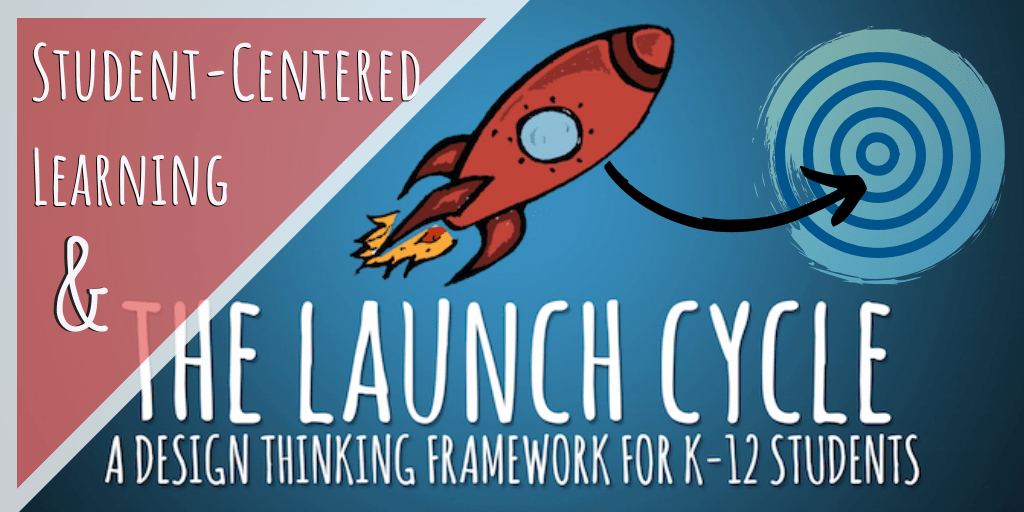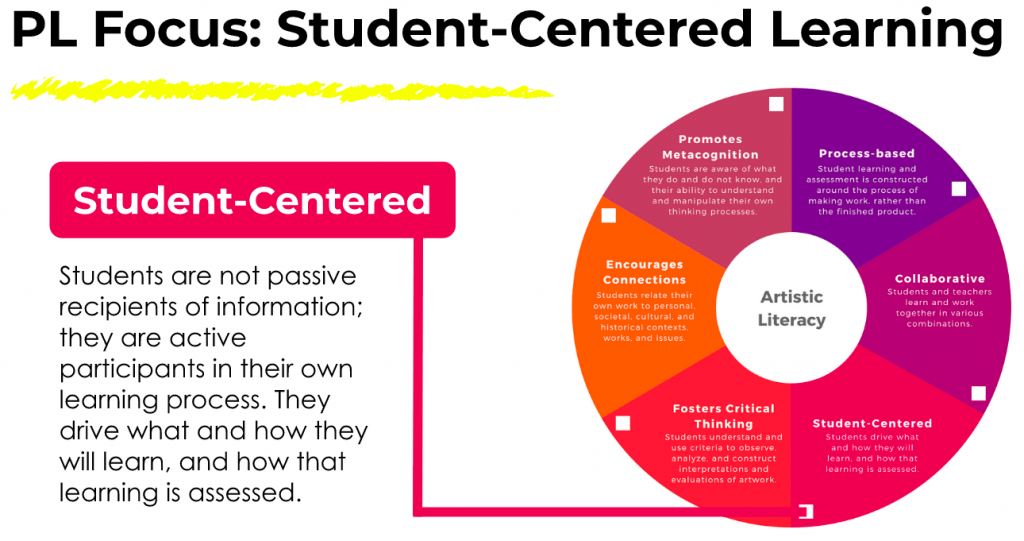
Designing Student-Centered Curriculum
How can we better integrate our students’ interests, ideas, and needs when we develop arts curriculum? When and where can we encourage them to take the wheel and drive their own learning (without sacrificing depth or discipline)?
- explore ways to activate and increase student voice, choice, and leadership
- engage in hands-on practice with Responding and Connecting strategies that help you activate the Standards more deeply in your classroom
- acquire tools and techniques that will help your students develop into more independent, motivated learners, thinkers, and artmakers
Ask yourself this essential question: “What am I doing for my students that they could do for themselves?” There are endless iterations of answers to this question and almost all of them apply. It could be something as simple as, picking up at supplies at the end of class, or as complex as choosing what their final projects will be based on. Both of these examples can be examined and reconfigured in such a way that students are at the center, driving the process.
Read more: http://www.cpsarts.org/teachers/professional-learning/arts-intensives/
Google Slidedeck: https://drive.google.com/open?id=1Qp2bAZGAfwnDhmW85HXqHxVIp6uXnSzc
 Student-Centered Learning:
Student-Centered Learning:
Students are not passive recipients of information; they are active participants in their own learning process. They drive what and how they will learn, and how that learning is assessed. In a traditional classroom, you see a great deal of “sit & get” where the teacher lectures to the whole class expecting students to soak up content like a sponge. Although this is seldom an optimal solution, today you have so many tools at your disposal that this should never be the norm in your classroom. Allowing students voice and choice not only increases engagement and retention but by making students integral parts of their own learning you’re shifting the focus of your classroom in a very real and meaningful way. The irony is that, according to John McCarthy, student centered learning, has to start with the teacher.
The Launch Cycle:
In an effort to streamline this process and make it easier for teachers to bring complex concepts, like design thinking, into their classrooms John Spencer helped develop the Launch Cycle. The 6 steps process has students thinking about problems, researching them, prototyping, and eventually “launching” their products into the real work. I frequently use this process when I teach my 21st Century Music Elective. It lends itself naturally to the arts, and you might be thinking that you already do something similar in your own classroom. However there are many teachers out there who still teach “Pinterest Arts” where their is one final correct product. While many might think of Pinterest as the ultimate teacher’s aid, there are some who would in fact argue that Pinterest is ruining your lessons. In a truly student-centered classroom, they’re thinking of their own problems and product, and the teacher acts as facilitator guiding the project along. When planning a lesson or looking at a problem, walk yourself through these 6 LAUCNH steps:
- Look, Listen, and Learn
- Ask a ton of questions
- Understand the core problem
- Navigate ideas and solutions
- Create a prototype
- Highlight successes and failures.
The idea behind this process is that students are constantly cycling through it, after they launch they use steps 6 to critically examine their work and then begin the process anew. This can be a great functional template in a number of subjects, but in art can really lead to some higher-order, challenging projects. Ultimately remember that it’s student-centered learning and the ideas should come from them. You’re role is the provide the scaffolding that will help their ideas launch into orbit!
I have used these tools to help me step outside my comfort-zone as a music teacher and helped change what a music class could be. With school of thought and strict adherence to programs like Orff or Kodaly the music room can be a surprisingly rigid environment. Consider setting aside a lesson here and there, or even a whole unit to really find your students interests and engage them with projects and material inspired by that passion. Here are several successful Project-based Learning units that I have used in my own classroom.
If you interested in this material and want to take it a step further, consider working alongside your learners to creating Student-driven Formative Assessments. We’ll be hosting another PD on January 31st, 2020 ( read more here )